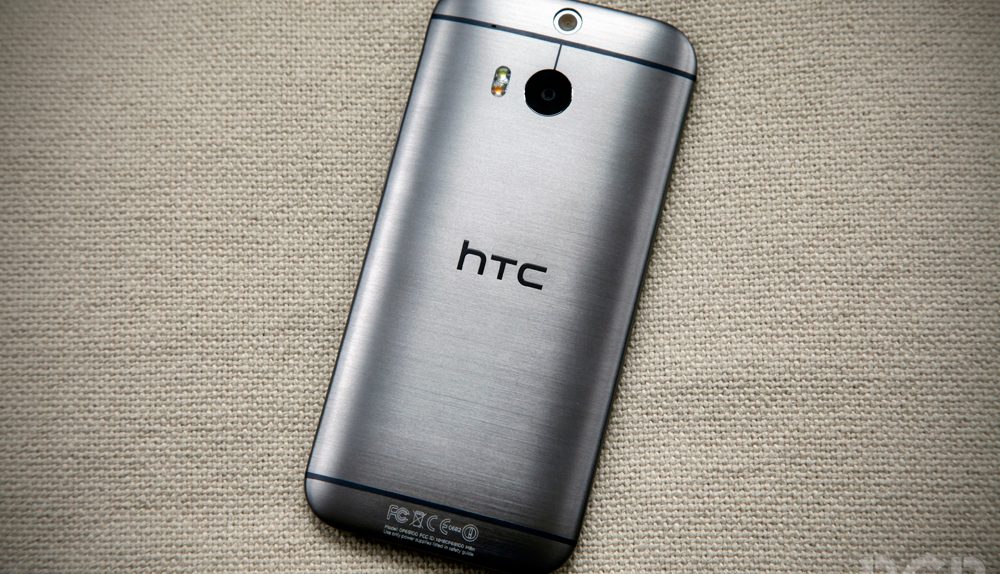Somehow, despite the steady stream of leaks that had spoiled nearly everything about the new HTC One (M8) over the past few weeks, HTC’s new flagship smartphone still managed to blow us away. Announced on Tuesday morning, the second-generation HTC One hero phone bests its predecessor in every way, highlighted by a fresh new design that is somehow even more sleek and elegant than the original model.
As we noted in our full HTC One (M8) review, this new flagship Android phone is no slouch when it comes to performance, either. The handset’s specs are highlighted by a quad-core 2.3GHz Snapdragon 801 processor, 2GB of RAM, a 5-inch full HD display, 16GB or 32GB of storage, microSDXC support, a 2,600 mAh battery, a 5-megapixel front-facing camera with a wide-angle lens, two UltraPixel rear cameras with a dual-LED flash, and Android 4.4 KitKat with Sense 6.
We have already published our in-depth HTC One (M8) review that covers every important aspect of this phone. As BGR began doing late last year with the Nexus 5, however, we also want to take some time to dive a bit deeper into the best and worst features of HTC’s new hero phone.
Considering the fact that we just called the new HTC One the best Android phone the world has ever seen, narrowing things down to a single “best” feature is no easy task. The phone’s 1080p Super LCD 3 display is beautiful and crisp, the 2.3GHz quad-core Snapdragon 801 processor and accompanying components are fast and powerful, the new Sense 6 software atop Android 4.4 KitKat is sleek and modern, and HTC’s “sensor hub” adds several great touch and motion gestures.
But in the end, the M8’s design is absolutely the star of the show.
Featuring a completely redesigned housing that is now 90% metal, the HTC One (M8) is easily the most beautiful and unique smartphone the world has ever seen. The aluminum back now wraps around the sides and bottom of the phone, creating a design that looks incredible. It’s also quite ergonomic, with carefully placed curves that help the phone sit perfectly in the hand.
The smooth aluminum dives inward to a polished, chamfered edge as it approaches the Gorilla Glass 3 screen cover on the face of the device. Metal inserts above and below the display include HTC’s signature micro-drilled speaker covers to complete the look.
In terms of materials, the new HTC One is the best in the business here as well.
Matched only by Apple’s iPhone 5s among widely available smartphones, the M8 feels like a million bucks compared to the competition. In a sea of phones encased in thin plastic that feels flimsy and looks cheap, the aluminum One (M8) is a diamond in the rough.
HTC has a history of playing with different finishes on its aluminum smartphones. My favorite is still the micro-arc oxidized finish on the black HTC One S from 2012, but the new brushed metal finish on the gunmetal gray HTC One (M8) I received to review is now a close second. It really is a great point of differentiation, with nothing else on the market that looks anything like it.
That said, the silver aluminum carried over from the original One, now called “glacial silver,” is also a terrific option for the M8. And while I would never personally carry it, the “amber gold” model is absolutely gorgeous. I have no idea how HTC’s designers managed to find the exact shade of gold aluminum that they could wrap the new One in without making it look gaudy and lurid, but they did.
There are dozens of things that all come together to make the HTC One (M8) a fantastic smartphone. Inside and out, HTC has done a superb job of creating a smartphone with a look that draws people in, backed up by software and performance that keep them in. The standout element here really is the design, though, and HTC should be quite proud of the product it has created.
BGR’s full HTC One (M8) review can be found here, and a piece on the worst thing about the HTC One (M8) can be found here.
This post is part of a new feature on BGR that supplements our standard product reviews. In this series, BGR takes a closer look at the best and worst qualities of some of the most popular consumer devices in the world in an effort to dive deeper into exactly what makes them stand out.




